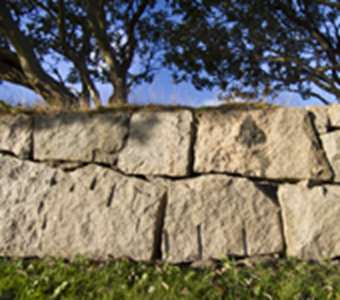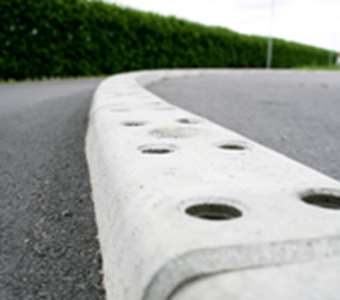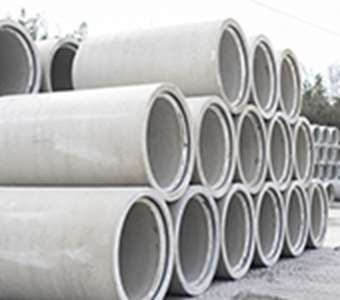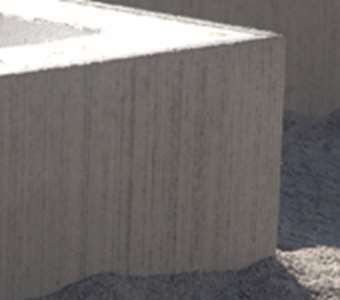THIS IS HOW!
-
4 kN or 20 kN?
An L-retaining element rating of 4 kN or 20 kN means that the horizontal ground surface at the level of the crown of the L-retaining element’s upright can be loaded with, respectively, 4 kN/m² or 20 kN/m².
In practice, this means that the ground above a 4 kN L-retaining element can only take the load presented by snow and people. It can also take a small ride-on mower, but vehicle loads are not allowed.
A 20 kN L-retaining element can take the weight of private cars provided that the cars park some metres away from the crown of the L-retaining element’s upright. If the ground surface slopes upwards from the crown of the L-retaining element’s upright, a 20 kN/m² rating is always required.
-
How are Bender cobblestones size graded?
Benders offers two different sacks of cobblestones. In one of these, cobblestone size is 70 – 100 mm. In the other it is 100 – 250 mm. Cobblestones are size graded in machines. The stones are screened through large meshes that separate the different sizes. Because the cobblestones are not totally round and are a product taken from nature, sizes can vary.
The design of the meshes means that stones can fall through if any one side matches the size criteria above. Thus, depending on stone shape (dimensions), sacks may contain different grades.
-
What is the difference between the construction dimensions and the product dimensions of paving stones and slabs?
Paving stone and slab construction dimensions are what we give in our product catalogues and on our website. The construction dimensions are vital when planning (or laying) an area that is to have paving stones and/or slabs. This is because these dimensions include the recommended joint width of 3 mm.
Product dimensions are the paving stone’s or slab’s real length and width excluding any spacing. The product dimensions are not given in any of our product catalogues or on our website. They are not useful when planning (or laying) an area that is to have paving stones and/or slabs. The tolerance requirements in Swedish standards are in relation to product dimensions.
-
Why has my Lithomex Easy not hardened?
When you lay paving stones and/or slabs, it is easy to forget the joints and their importance. The joints between the stones/slabs are important not just aesthetically. They also have several important technical functions. Joints play a major role in achieving good results (exactly the same as do the choice of stones/slabs and correctly executed ground preparation). Depending on which joint filler is chosen, laying requirements differ.
When using an elastic filler (where the hardener is activated by water), it is critical that laying is carried out exactly as per the instructions. Read the packaging meticulously and check the installation film.
When an elastic filler does not harden correctly, it is most usually because of one or more of the following:
- Joints too wide. Lithomex Easy cannot be used for joints wider than 10 mm.
- Not enough water. As shown in the installation film, a lot of water must be used. The entire joint must be completely soaked.
- Sack contents were not mixed. During sack transport, the sand and hardener can settle into distinct layers. Thus, always mix sack contents once again before laying begins.
- The substrate does not drain. Joints let water through. This water must be able to drain away. Water must not be allowed to collect in the joint. If the water does not drain away, the joint will not harden. Instead, there is a risk that the joint will swell or become sticky when there is rain. Thus, Lithomex Easy cannot be used for laying where the superstructure retains water. Note that a far too thick (over 30 mm) course of 0-4 stone dust in the bedding layer can be too dense and not drain sufficiently well. This may result in the joint not hardening.
























